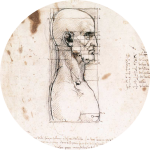 Spontaneous intracerebral hemorrhages
Spontaneous intracerebral hemorrhages
Anatomy
Primary SICHs are located near small perforating arteries [thalamus and basal ganglia (50%), brainstem (mainly the pons) and cerebellum (20%)] or at the cortico-subcortical level [in case of amyloid angiopathy (30%)] (32). In case of deep hematoma, ependymal disruption may occur with the extravasation of blood in the ventricular system leading to intraventricular hemorrhage (IVH). IVH as we will see later is a major factor for the severity of the hematoma justifying the use of specific therapeutic measures.
Pathophysiology
Vascular rupture occurs within small vessels and diffuses into the parenchyma.
Nota Bene: Contrary to what was initially thought, the hematoma often continues to increase volume for several hours after its occurrence, usually within 3 hours of the onset of bleeding, but this may continue for 12 to 24 hours (23). Thus 26% of patients have an increase in size of the hematoma within the hour of diagnosis, and 12% in the first 24 hours (6). Moreover, the production from the clot of osmotically active proteins into adjacent parenchyma quickly induces the appearance of early edema (47).
Secondarily, the disruption of the blood-brain barrier, dysfunction of various ionic channels and neuronal death induces cytotoxic and vasogenic edema (48). The induction of this secondary edema seems to be related to the toxicity of the degradation products of the hematoma such as iron, and not in connection with an ischemic event as originally thought of (47,48,49). This is important because most pharmacological trials are derived from this concept (including trials testing the iron chelators, such as deferoxamine). This peri-lesional edema occurs mainly in the first 24 hours, however it evolves slowly to reach a maximum volume 5-6 days after the onset of bleeding (14,22).
The increased volume of the hematoma and peri-lesional edema over several hours clearly explains the progressive neurological deterioration often observed during the first hours after the onset of symptoms.
In case of ventricular bleeding, the blood clots may cause an obstruction of the CSF flow leading to hydrocephalus. This is generally rapid and responsible for significant mortality. Secondarily, the breakdown products of the IVH will exert significant toxicity on the ependyma, which can lead to impaired absorption of CSF and thus to communicating hydrocephalus (19).
Clinical picture
A clinical picture of neurologic symptoms of sudden onset should primarily evoke the diagnosis of a CVA but there are no signs specific for the hemorrhagic type.
The clinical features depend on the location and extension of the hematoma.
1 - The manifestations of intracranial hypertension (ICHTN) are common and classical: headache, vomiting and impaired alertness to coma (to be evaluated by the GCS). They are due to the direct or indirect compression of the thalamus and reticular formation (39, 30, 39).
2 - A meningeal syndrome can be observed in case of subarachnoid or intraventricular extension (29).
3 - Deep ICH (thalamus, putamen, caudate nucleus) by compressing the internal capsule, may cause contro-lateral hemiplegia (43).
4 - Lesions of the subcortical white matter can interrupt the activity of different cortical regions causing various dysfunctions or neurological deficit (including but not limited to): aphasia, homonymous hemianopia, hemiplegia, frontal syndrome ... (43)
5 - Brainstem lesions may include (but not limited to): gaze abnormality, cranial nerves lesions, contralateral hemiplegia ... (35)
6 - Cerebellar hemorrhage causes cerebellar syndrome (35).
None of these signs are specifi, the diagnosis is made on imaging.
Almost a quarter of patients will have a deteriorating level of consciousness in the early hours of the treatment: when it occurs within the first 3 hours after onset of symptoms, it is most often due an increase in the volume of the hematoma. When it occurs within 24-48 hours, it is usually due to an increase in the peri-lesional edema (27,36).
 Encyclopædia Neurochirurgica
Encyclopædia Neurochirurgica

